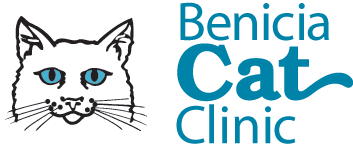Educational Articles
-
The birth of a baby or the adoption of a new child can be associated with both excitement and stress. It is important to prepare your pet for the new addition. Before the baby arrives, introduce novel sounds and scents, and be sure your pet has access to safe resting spaces. Socialize your young pet to children from the start. Children should be directly supervised by an adult when they interact with pets.
-
Chin acne in cats is a poorly understood disorder of follicular keratinization (the overproduction of keratin, a protein found in the outer layer of skin). If this excess keratin is trapped in the hair follicle, comedones (blackheads) form. Pustules (pimples) may form if bacteria infect the comedones. The underlying causes are not fully understood but may be associated with excess sebum production, viral infection, immunosuppression, stress, or poor grooming. Treatment options are available and often involve improved hygiene.
-
Chlamydial conjunctivitis in cats is highly contagious and can look similar to herpes conjunctivitis. Young cats and kittens are especially vulnerable to this infection, although chlamydia can be detected in cats of all ages. It is one of the most common causes of infectious conjunctivitis in cats. This handout describes the clinical signs and how this condition can be treated or prevented.
-
Cholangitis/cholangiohepatitis in cats refers to inflammation of the bile duct or a combination of inflammation of the bile duct, gallbladder, and surrounding liver tissue. The clinical signs, diagnosis, treatments, and prognosis of the conditions are outlined in this handout.
-
Chronic kidney disease (once called chronic kidney failure) is mainly a problem in mature and senior cats (seven years and older). Unfortunately, once the kidneys are damaged, they have minimal ability to recover. However, with proper management, most CKD cases progress very slowly. This handout describes the clinical signs of the condition, along with causes, diagnosis, treatment, and nutritional management.
-
Chronic upper respiratory tract disease in cats results from inflammation of any part of the upper respiratory tract. Many conditions contribute to this. Treatment is based on the underlying cause.
-
Chylothorax is a life-threatening condition caused by chyle leaking out of the thoracic duct into the chest cavity, causing lung compression and the inability of the lungs to fill with air. This occurs more commonly in purebred cats. The causes, diagnostics, treatments, and prognosis are explained in this handout.
-
Cidofovir ophthalmic is a topical antiviral medication used to treat viral eye infections, such as feline herpesvirus-1, in cats. This medication must be compounded by a veterinarian or veterinary pharmacy before use in cats. Side effects may include a mild stinging sensation or redness of the eyes. Pregnant women should not handle this medication.
-
Your cat's skin and coat condition are good indicators of her health. A healthy coat should be shiny and smooth, not brittle or coarse, and healthy skin should be supple and clear, not greasy, flaky, or bumpy. Selective breeding has led to the development of cats with various coat characteristics requiring varying grooming needs. To maintain healthy skin and coat, your cat also requires a properly balanced diet.
-
Coccidia are single-celled organisms that can act as a parasite after infecting your cat through the gastrointestinal tract. The most common form affecting cats, Isospora, is not a concern for infecting people, unlike Toxoplasma. They are highly resistant to environmental conditions, so cleanliness is important to prevent re-infection. Treatment is often simple with the appropriate antibiotics prescribed by your veterinarian.

